The Ultimate Guide to Developing Your Sewing Skills
Welcome to the world of sewing, where creativity meets functionality! Whether you're a complete novice or an experienced sewist looking to polish your craft, this comprehensive guide is designed to help you develop your sewing skills to new heights. Imagine the satisfaction of transforming a simple piece of fabric into a beautiful garment or a cozy quilt. It's not just about stitching pieces together; it's about expressing your unique style and personality through fabric. In this guide, we'll explore everything from the basics of sewing to advanced techniques, ensuring you have the knowledge and tools necessary to embark on your sewing journey.
So, why should you consider diving into the art of sewing? Well, for starters, sewing is an incredibly rewarding hobby that allows you to create personalized items that fit your specific tastes and needs. Think about it: instead of purchasing mass-produced clothing that may not fit perfectly, you can craft your own pieces that are tailored just for you! Plus, sewing can be a fantastic stress-reliever, providing you with a sense of accomplishment with every completed project. It's like meditation, but with a sewing machine!
Throughout this guide, we'll break down complex concepts into manageable sections, making it easy for you to follow along. We'll start with the basics, ensuring you understand essential terminology, tools, and the different types of fabrics available. From there, we'll help you choose the right sewing machine that suits your needs, whether you're on a budget or looking for high-end features. You'll also learn about the must-have tools that every sewer should have in their arsenal.
As you progress, we'll delve into various sewing techniques that will expand your skill set. From mastering basic stitches to understanding how to read and interpret sewing patterns, you'll gain the confidence needed to tackle any project. And speaking of projects, we'll guide you through creating your first sewing masterpiece, complete with tips to ensure your success.
By the end of this guide, you'll not only have a wealth of knowledge but also the inspiration to keep sewing. So grab your fabric, thread, and a pair of scissors—let's get started on this exciting sewing adventure together!
As you embark on your sewing journey, you may have some questions. Here are a few frequently asked questions that can help clarify your path:
- What is the best sewing machine for beginners? - Look for a machine that is user-friendly and has essential features like straight and zigzag stitches.
- How long does it take to learn sewing? - The time varies; some may grasp the basics in a few weeks, while others may take months to master more advanced techniques.
- Can I learn sewing online? - Absolutely! There are countless online resources, tutorials, and communities that can help you learn at your own pace.
- What fabric should I start with? - Cotton is a great beginner fabric because it's easy to work with and forgiving.
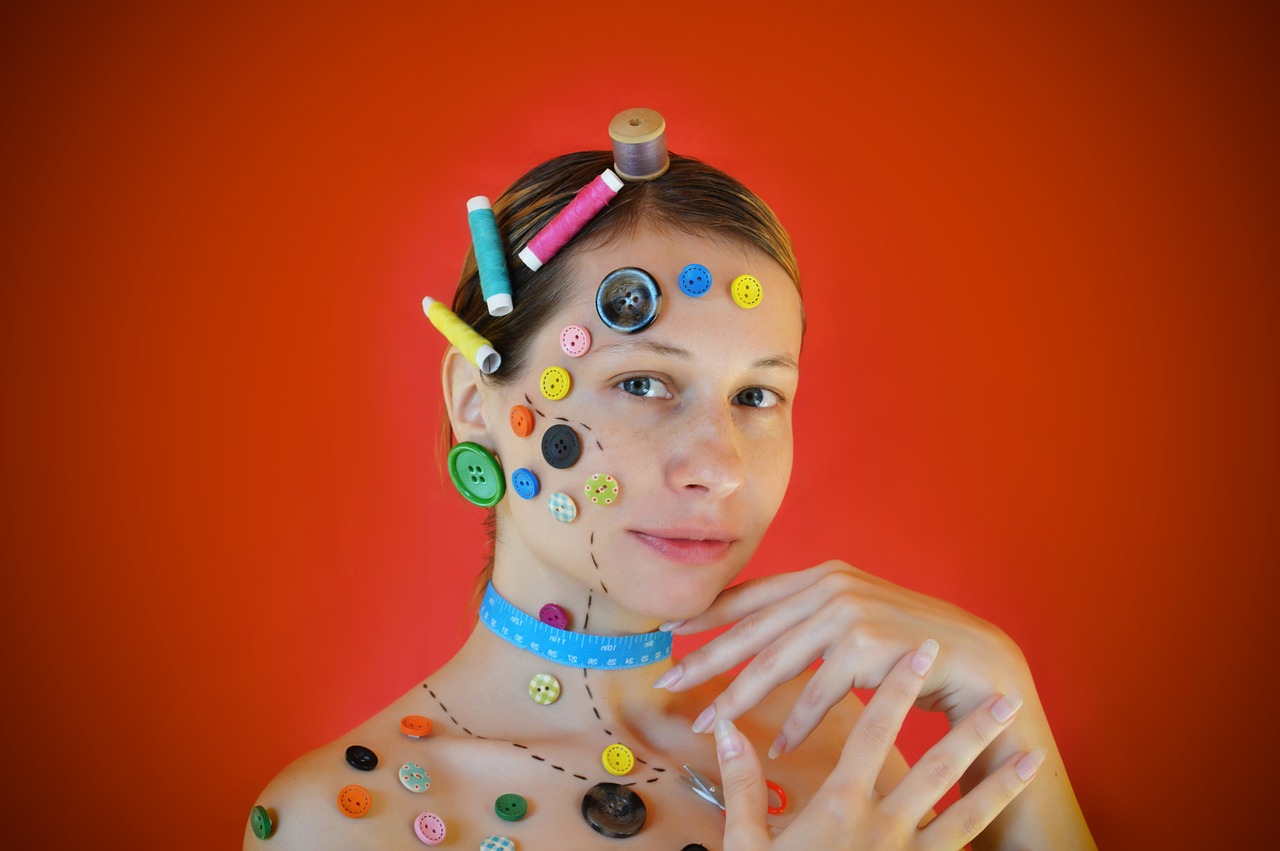
Understanding Sewing Basics
Before you dive headfirst into the world of sewing, it's crucial to get a grip on the basics. Think of it as learning the alphabet before writing your first novel; without these foundational elements, your sewing journey could quickly unravel. So, let's break down the essential concepts you need to know.
First off, let's talk about sewing terminology. Familiarizing yourself with common terms like "seam," "hem," and "notions" will not only make your sewing experience smoother but also help you communicate effectively with other sewists. For instance, a seam is the line where two pieces of fabric are stitched together, while a hem is the finished edge of a garment. These terms are the building blocks of your sewing vocabulary.
Next up are the tools you'll need. Having the right tools is like having a chef's knife in the kitchen; it makes all the difference! Here are some essential tools every sewer should have:
- Sewing Machine: Your trusty sidekick that will do most of the heavy lifting.
- Fabric Scissors: A sharp pair of scissors is a must for clean cuts.
- Measuring Tape: Accurate measurements are key to a successful project.
- Pins and Pincushion: These help hold your fabric in place as you sew.
- Seam Ripper: Mistakes happen, and a seam ripper will be your best friend for corrections.
Now, let’s not forget about fabric types. Understanding the different types of fabric is essential for choosing the right material for your project. Fabrics range from lightweight cottons to heavy denim, and each type has its unique properties that affect how you sew and the final look of your project. For example, cotton is forgiving and easy to work with, making it perfect for beginners, while silk requires a gentler touch and more skill.
To give you a clearer picture, here’s a quick comparison of common fabric types:
| Fabric Type | Characteristics | Best For |
|---|---|---|
| Cotton | Soft, breathable, and easy to sew | Clothing, quilts, and home decor |
| Denim | Durable and heavy | Jeans and jackets |
| Silk | Luxurious and delicate | Formal wear and linings |
| Knits | Stretchy and comfortable | T-shirts and activewear |
Understanding these basics will not only boost your confidence but also set you up for success as you explore the exciting world of sewing. So, whether you’re planning to stitch a simple pillowcase or a complex dress, having a solid grasp of these fundamental concepts will help you navigate your sewing projects with ease.
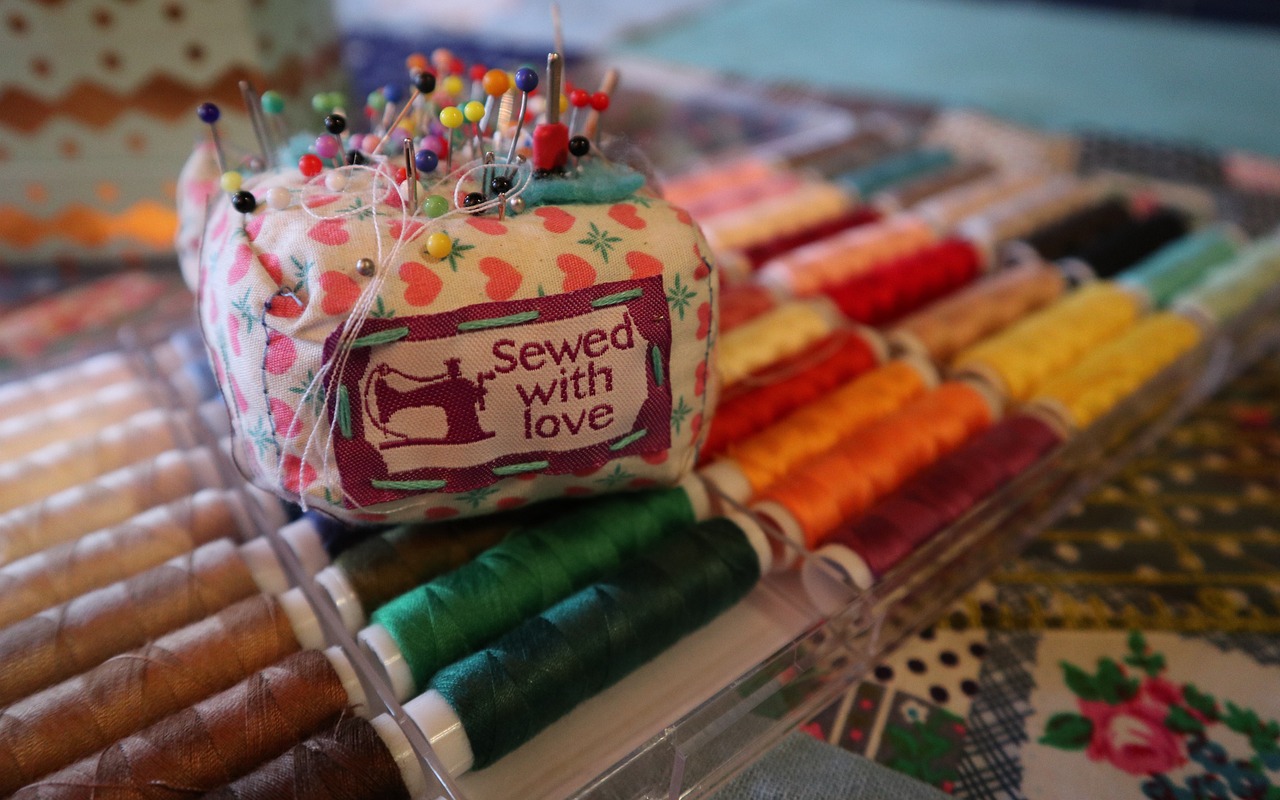
Choosing the Right Sewing Machine
When it comes to sewing, the machine you choose can make all the difference. It's like picking the right tool for a job; having the right sewing machine can transform your experience from frustrating to fabulous. So, how do you navigate the sea of options available? First, consider your sewing goals. Are you a beginner looking to make simple projects, or are you an experienced sewist aiming to tackle complex designs? Understanding your needs will help you narrow down your choices.
There are several types of sewing machines available, and each comes with its own set of features. For instance, mechanical machines are often simpler and more affordable, making them a great choice for beginners. On the other hand, computerized sewing machines offer advanced features like automatic threading and a wide variety of stitches, which can be incredibly useful for more intricate projects.
Let’s break down the different types of sewing machines:
- Mechanical Sewing Machines: These are straightforward and reliable. They usually have a limited number of stitches but are perfect for basic sewing tasks.
- Computerized Sewing Machines: These machines come equipped with a digital interface, allowing you to select stitches, adjust settings, and even save your favorite patterns.
- Embroidery Machines: If you’re looking to add a personal touch to your projects, an embroidery machine can help you create stunning designs with ease.
When evaluating features, consider the following:
| Feature | Importance |
|---|---|
| Stitch Variety | More options allow for greater creativity in your projects. |
| Automatic Needle Threader | Helps save time and frustration, especially for beginners. |
| Adjustable Speed Control | Gives you control over how fast you sew, which is beneficial for precision work. |
For those just starting out, it’s essential to find a sewing machine that fits your budget without sacrificing quality. Many reputable brands offer reliable machines at a lower price point. Look for models that provide a good balance of features and durability. Remember, a machine that is too complex might discourage you, while a simple one can help you build confidence.
If you’re a seasoned sewist, you might want to invest in a high-end machine that offers advanced features. These machines often come with specialized stitches, embroidery capabilities, and enhanced functionality that can elevate your projects. Think of these machines as your trusty sidekick, ready to assist you in creating intricate designs and professional finishes.
Ultimately, the right sewing machine is one that complements your sewing style and meets your specific needs. Don’t rush your decision; take the time to research, read reviews, and even test machines in-store if possible. After all, this purchase is an investment in your sewing journey, and you want to ensure it’s a match made in sewing heaven!
1. What features should I look for in a beginner sewing machine?
Look for a machine with a few basic stitches, an automatic needle threader, and adjustable speed control. These features will make your sewing experience more enjoyable and less frustrating.
2. Are computerized sewing machines worth the investment?
Absolutely! Computerized machines often come with a variety of features that can save you time and enhance your creativity. If you plan to sew regularly, they can be a great investment.
3. How much should I expect to spend on a good sewing machine?
Prices can vary greatly, but you can find a quality machine for anywhere between $200 to $600. For high-end models, prices can go upwards of $1,000.
4. Can I use a sewing machine for quilting?
Yes! Many sewing machines are versatile enough to handle quilting. However, investing in a machine specifically designed for quilting can make the process easier.

Machine Types and Features
When it comes to sewing machines, choosing the right one can feel like navigating a labyrinth filled with options. There are several types of sewing machines available, each designed to cater to different sewing needs and skill levels. Understanding these types is crucial for making an informed decision that aligns with your sewing aspirations. Let's break it down!
First up, we have the mechanical sewing machines. These are the classic workhorses of the sewing world. They operate with a series of gears and levers, making them straightforward and reliable. Perfect for beginners, mechanical machines often come with essential features, such as a basic stitch selection and adjustable stitch length. If you’re just starting out, this type of machine is like having a trusty bicycle — simple, effective, and a great way to learn the ropes.
Next, we venture into the realm of computerized sewing machines. These modern marvels are equipped with advanced technology that allows for a plethora of features, including automatic buttonhole settings, a wide variety of built-in stitches, and even the ability to save custom stitch patterns. Think of these machines as the luxury cars of the sewing world — packed with features that make your sewing experience smoother and more enjoyable. They are ideal for those who want to explore complex projects and enjoy the convenience of automation.
For those interested in embroidery and quilting, there are specialized machines designed specifically for these crafts. Embroidery machines come with built-in designs and the ability to import custom patterns, while quilting machines often feature a larger throat space to accommodate bulky quilts. These machines are like the Swiss Army knives of sewing — they offer multiple functionalities that can elevate your projects to a whole new level.
Now, let’s talk about features. When selecting a sewing machine, consider the following key features:
- Stitch Variety: Look for machines that offer a range of stitches, from basic straight stitches to decorative options.
- Speed Control: Adjustable speed settings can help beginners sew at a comfortable pace.
- Automatic Needle Threader: This handy feature saves time and frustration, especially for those who struggle with threading needles.
- Built-in Light: Good lighting is essential for detailed work, so choose a machine with adequate illumination.
Ultimately, the right sewing machine for you will depend on your personal sewing style, the types of projects you wish to undertake, and your budget. Just like finding the perfect pair of shoes, it’s important to try out a few options and see what fits best. Remember, investing in a quality machine can make all the difference in your sewing journey!
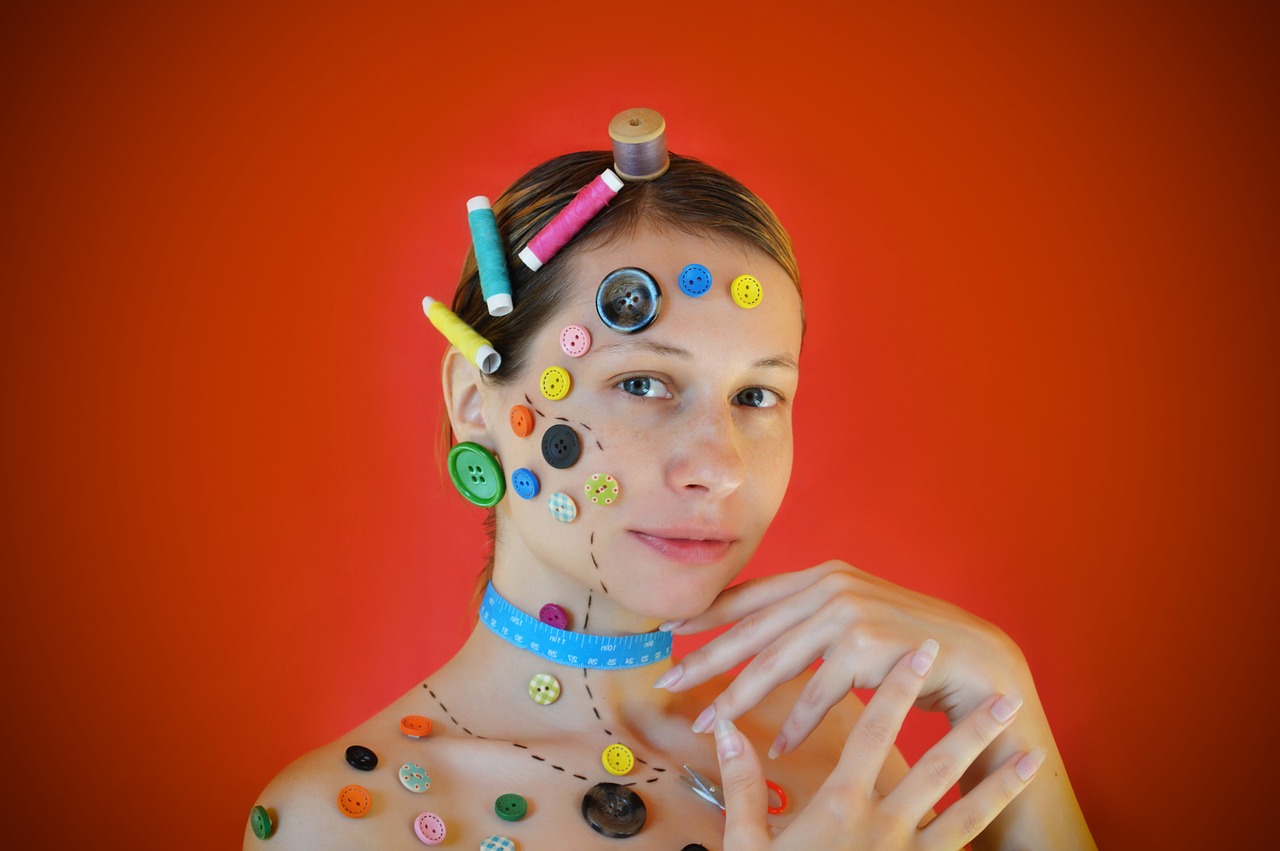
Budget-Friendly Options
When it comes to sewing, starting your journey doesn’t have to be an expensive endeavor. In fact, there are plenty of budget-friendly sewing machines available that provide excellent functionality without breaking the bank. Imagine being able to create beautiful garments, home decor, or gifts without the hefty price tag! This is not just a dream; it’s entirely possible with the right machine.
First and foremost, it’s essential to identify what you need in a sewing machine. For beginners, a machine that offers basic stitches and simple features can be more than adequate. Look for machines that provide straight and zigzag stitches as these are the foundation of many sewing projects. A reliable brand that is often recommended for budget-conscious sewists is Brother. Their models frequently come equipped with user-friendly features, making them ideal for those just starting out.
Another excellent option is Singer, known for its durability and ease of use. Models like the Singer Start 1304 and the Brother XM2701 are not only affordable but also come with a variety of accessories that allow you to start sewing right away. Both brands offer machines that typically range from $100 to $200, which is a small investment for the endless possibilities they provide.
For those who might want to explore sewing without committing to a purchase, consider looking into second-hand machines. Platforms like eBay, Craigslist, or local thrift stores often have great deals on gently used sewing machines. Just make sure to check the machine’s condition and ask about its history to ensure you’re making a wise investment. You might be surprised at the treasures you can find!
To give you a clearer idea, here’s a quick comparison table of some popular budget-friendly sewing machines:
| Brand | Model | Price Range | Key Features |
|---|---|---|---|
| Brother | XM2701 | $100 - $150 | 27 built-in stitches, lightweight, easy to use |
| Singer | Start 1304 | $100 - $130 | 6 built-in stitches, automatic needle threader |
| Janome | 2212 | $150 - $200 | 12 built-in stitches, durable, easy to operate |
In conclusion, embarking on your sewing journey doesn’t require a hefty investment. By choosing budget-friendly options, you can develop your skills and create beautiful projects without the financial strain. Remember, it’s not about how much you spend on your machine, but how you utilize it that truly matters. So, roll up your sleeves, grab some fabric, and let your creativity flow!
- What is the best sewing machine for beginners? The Brother XM2701 and Singer Start 1304 are both excellent choices for beginners due to their ease of use and affordability.
- Can I find quality second-hand sewing machines? Yes, many second-hand machines are in great condition. Just ensure to check their functionality before purchasing.
- What basic features should I look for in a budget sewing machine? Look for machines that offer straight and zigzag stitches, a reliable needle threader, and a lightweight design for easy portability.
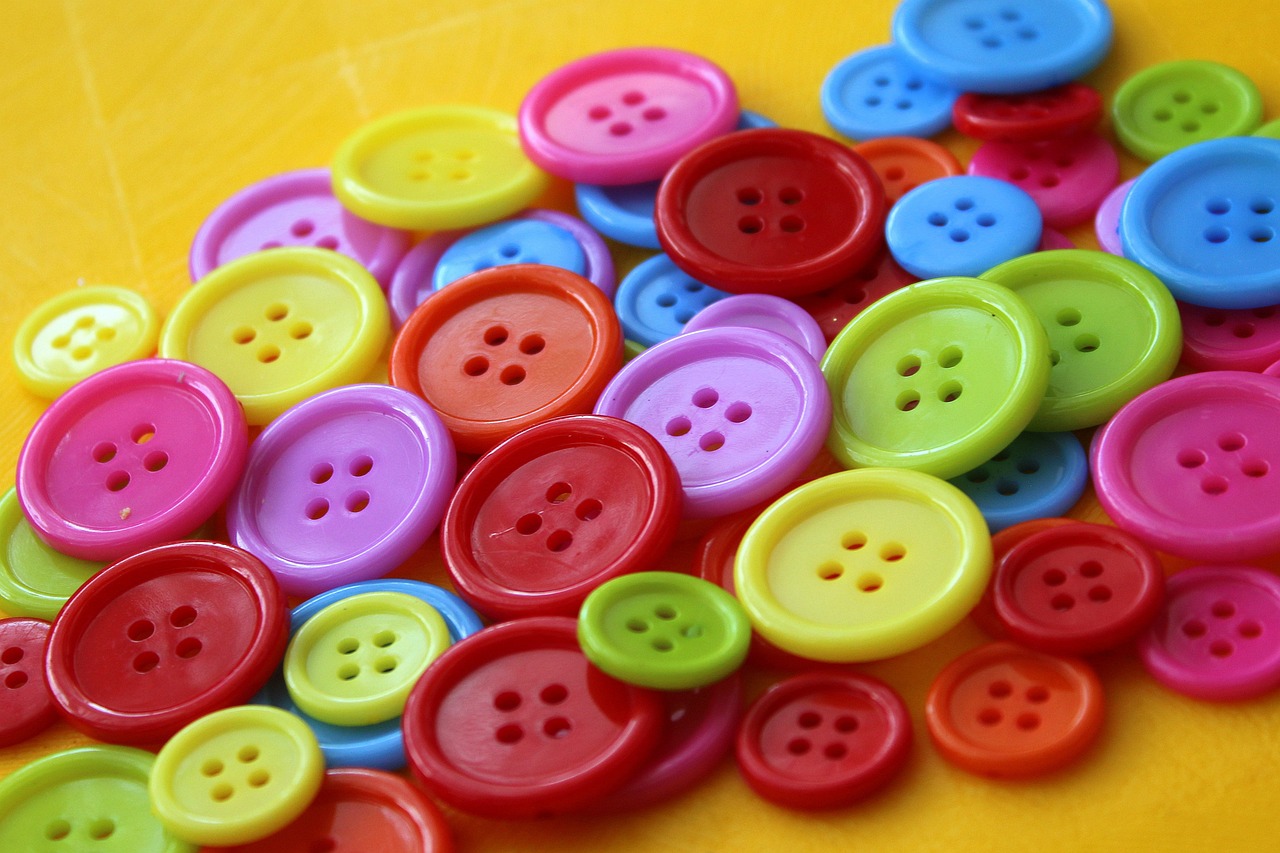
Advanced Machines for Experts
For seasoned sewists, investing in an advanced sewing machine can be a game-changer. These machines are designed to accommodate the intricate demands of experienced crafters, allowing for a level of creativity and precision that basic models simply can't provide. Imagine having the ability to create stunning embroidery designs or tackle complex quilting projects with ease. Advanced machines come equipped with a range of features that not only enhance your sewing experience but also expand your creative horizons.
One of the standout features of advanced sewing machines is their embroidery capabilities. With built-in designs and the option to upload custom patterns, you can transform any project into a personalized masterpiece. Additionally, many of these machines offer a variety of specialized stitches, such as overlock, cover stitch, and decorative stitches, which can elevate your projects from basic to breathtaking.
When selecting an advanced machine, consider the following features:
- Computerized Controls: These machines often come with LCD screens, making it easier to navigate through settings and stitch options.
- Automatic Threading: This feature saves time and frustration, allowing you to focus on your sewing rather than the setup.
- Speed Control: Perfect for those intricate projects, speed control lets you sew at a pace that suits your skill level and comfort.
- Large Workspace: A spacious sewing area is essential for handling large fabric pieces, especially for quilting or home décor projects.
To give you a clearer picture of the options available, here's a quick comparison of some popular advanced sewing machines:
| Machine Model | Embroidery Capability | Stitch Options | Price Range |
|---|---|---|---|
| Brother SE600 | Yes | 80 | $300 - $400 |
| Singer Quantum Stylist 9960 | No | 600 | $300 - $500 |
| Janome Memory Craft 500E | Yes | 160 | $600 - $800 |
As you can see, the right advanced machine can significantly enhance your sewing capabilities. Investing in a high-quality sewing machine not only boosts your efficiency but also opens the door to endless creative possibilities. Whether you're looking to create stunning quilts, intricate garments, or beautiful home décor, a sophisticated sewing machine will be your best companion on this exciting journey.
In conclusion, embracing the world of advanced sewing machines will elevate your craft to new heights. So why settle for ordinary when you can create extraordinary? Take the plunge, explore your options, and let your creativity soar!
Q: What should I look for when purchasing an advanced sewing machine?
A: Consider features like embroidery capabilities, stitch options, ease of use, and your specific sewing needs. It's essential to choose a machine that complements your skills and the types of projects you wish to undertake.
Q: Are advanced sewing machines suitable for beginners?
A: While advanced machines are designed with experienced sewists in mind, many come with user-friendly features that can benefit beginners as well. However, starting with a basic machine may help you build foundational skills before transitioning to a more complex model.
Q: How much should I expect to spend on an advanced sewing machine?
A: Prices can vary widely based on features and brand, typically ranging from $300 to over $1,000. It's crucial to set a budget and consider what features are most important for your sewing projects.

Essential Sewing Tools
When it comes to sewing, having the right tools can make all the difference between a frustrating experience and a joyful one. Think of it like cooking; having the right kitchen gadgets can turn a complicated recipe into a delightful meal. Similarly, the essential sewing tools are your best friends on this creative journey. So, what are these magical tools that can elevate your sewing game?
First and foremost, you need a good pair of fabric scissors. These aren't just any scissors; they are specially designed to cut fabric smoothly without fraying the edges. Investing in a quality pair can save you a lot of headaches later on. Alongside your scissors, a rotary cutter is also a fantastic addition to your toolkit. This tool allows you to cut multiple layers of fabric with precision, making it a favorite among quilters and advanced sewists.
Next on the list is a reliable measuring tape. Accurate measurements are crucial in sewing, and a flexible measuring tape ensures you can measure curves and corners effectively. Pair this with a clear ruler for straight edges, and you’ll be well on your way to cutting your fabric accurately.
Now, let's talk about pins and pin cushions. Pins are essential for holding your fabric pieces together before you sew them, and a good pin cushion will keep them organized and easily accessible. You might also want to consider using fabric clips, especially for thicker materials where pins might not hold as securely.
Another must-have is a seam ripper. It may sound counterintuitive to have a tool designed for undoing your hard work, but trust me, it’s a lifesaver! Mistakes happen to the best of us, and a seam ripper will help you fix them without damaging your fabric.
Lastly, don’t forget about your sewing machine accessories. Depending on your machine, you might need various presser feet, needles, and a walking foot for quilting. These little extras can significantly enhance your sewing experience and allow you to tackle more complex projects.
Here’s a quick table summarizing these essential tools:
| Tool | Purpose |
|---|---|
| Fabric Scissors | For cutting fabric smoothly |
| Rotary Cutter | For cutting multiple layers of fabric |
| Measuring Tape | For accurate measurements |
| Clear Ruler | For straight edge cutting |
| Pins & Pin Cushion | For holding fabric pieces together |
| Seam Ripper | For undoing sewing mistakes |
| Sewing Machine Accessories | Enhance sewing capabilities |
In conclusion, having the right tools is essential for any sewing enthusiast. They not only make your projects easier but also more enjoyable. So, gather these tools, and you’ll be well-equipped to embark on your sewing adventures!
- What are the basic tools needed for sewing? The basic tools include fabric scissors, measuring tape, pins, a seam ripper, and a sewing machine with the necessary accessories.
- Can I sew without a sewing machine? Absolutely! Hand sewing is a great way to start and can be very rewarding for smaller projects.
- How do I choose the right fabric for my project? Consider the pattern requirements, the garment type, and your personal comfort. Always check the fabric's weight and drape.
- What should I do if I make a mistake while sewing? Don't panic! Use your seam ripper to carefully undo the stitches, and remember that mistakes are part of the learning process.
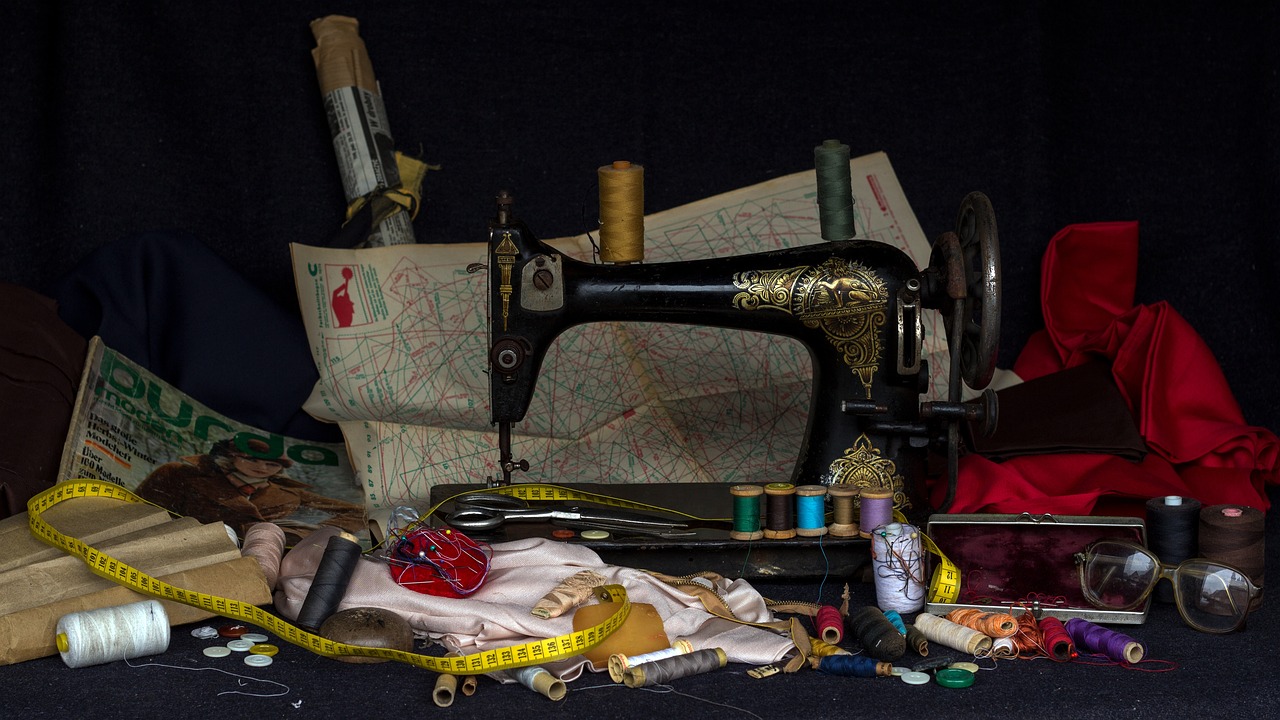
Mastering Sewing Techniques
When it comes to sewing, mastering various techniques can truly elevate your projects from basic to breathtaking. Think of sewing as a language; just like learning to speak fluently, you need to practice different phrases and styles to express yourself fully. This section will guide you through the essential sewing techniques that every aspiring sewist should have in their toolkit. Whether you're stitching a simple hem or crafting a complex quilt, understanding these techniques will give you the confidence to tackle any project that comes your way.
Let's start with the most fundamental aspect of sewing: stitching techniques. The type of stitch you choose can dramatically affect the outcome of your project. For instance, a straight stitch is your go-to for most sewing tasks, providing a clean and strong seam. In contrast, a zigzag stitch is perfect for finishing raw edges or adding a little flair to your work. Decorative stitches can transform a plain piece of fabric into a stunning masterpiece, allowing you to personalize your creations in unique ways. Here's a quick breakdown of some essential stitching techniques:
| Stitch Type | Uses |
|---|---|
| Straight Stitch | Basic seams, topstitching |
| Zigzag Stitch | Finishing edges, stretch fabrics |
| Decorative Stitch | Embellishing projects |
Next, let's dive into pattern reading and cutting. Understanding how to read sewing patterns is like learning to read a map; it guides you through the process of creating your project. Patterns typically come with a variety of symbols and markings that indicate seam allowances, grainlines, and notches. Familiarizing yourself with these symbols will make the cutting process much smoother and ensure that your pieces fit together perfectly. Always remember to double-check your fabric's grainline before cutting; it can make a significant difference in the drape and fit of your final product.
Cutting fabric accurately is just as crucial as choosing the right stitch. A few tips to keep in mind include:
- Use sharp scissors or a rotary cutter for clean edges.
- Pin your pattern pieces to the fabric to prevent shifting.
- Take your time; rushing can lead to mistakes.
As you grow more comfortable with these techniques, don’t hesitate to experiment. Sewing is as much about creativity as it is about technique. Try mixing different stitches or playing with various fabrics to see how they interact. This hands-on approach will not only improve your skills but also help you develop your unique style.
Q: How do I know which stitch to use for my project?
A: The type of stitch you choose depends on the fabric and the purpose of your project. For most garments, a straight stitch is ideal, while stretchy fabrics benefit from a zigzag stitch.
Q: What should I do if I make a mistake while sewing?
A: Mistakes happen to everyone! If you make a mistake, don’t panic. Most errors can be fixed by carefully unpicking the stitches and trying again.
Q: How can I improve my sewing skills?
A: Practice is key! Start with simple projects and gradually take on more complex ones. Additionally, consider joining a sewing class or online community for tips and support.
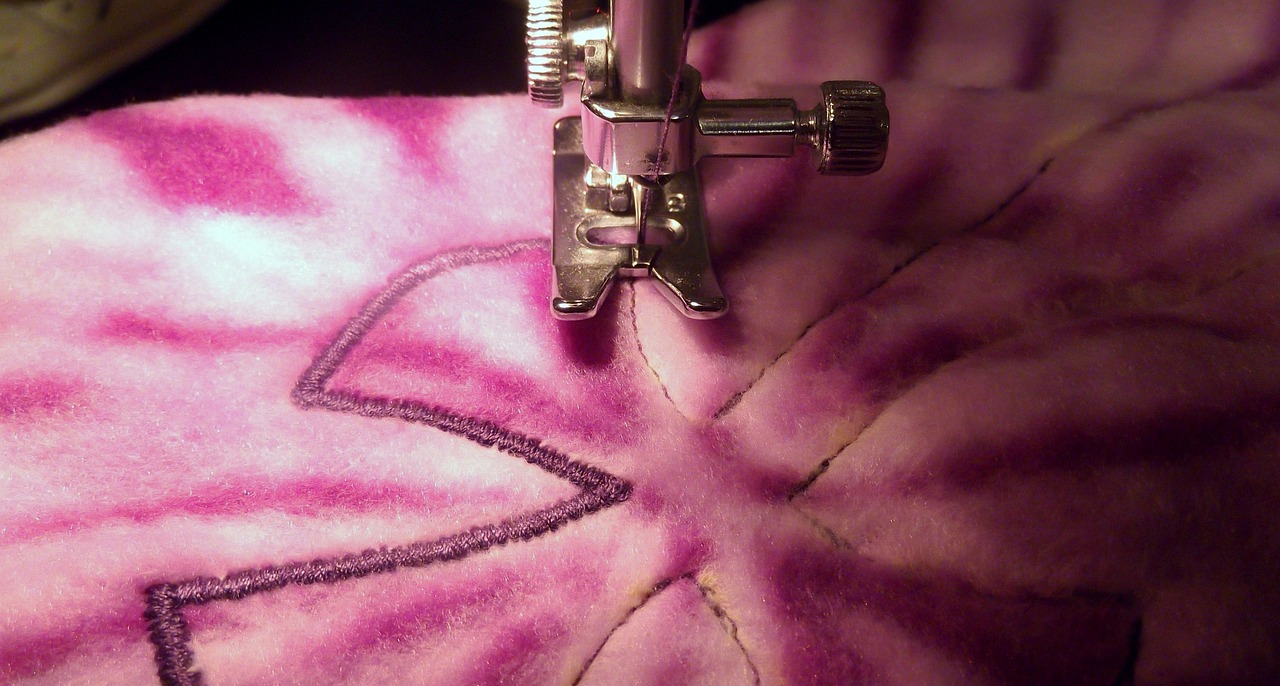
Stitching Techniques
When it comes to sewing, mastering stitching techniques is like learning the alphabet before writing a novel. It's the foundation upon which all your sewing projects will stand. Whether you’re a newbie or a seasoned sewist, understanding the various stitches can elevate your work from ordinary to extraordinary. So, let’s dive into the world of stitching!
First off, let's talk about the most essential stitch: the straight stitch. This is the backbone of sewing and is used in almost every project. It’s straightforward, just like its name suggests, and is perfect for seams, hems, and topstitching. To execute a straight stitch, simply guide your fabric under the needle while keeping a steady pace. It’s like walking a straight line—easy, right?
Next, we have the zigzag stitch. This stitch is incredibly versatile and serves multiple purposes, such as finishing raw edges to prevent fraying and adding stretch to seams. Imagine it as the Swiss Army knife of stitches—handy in various situations. To use a zigzag stitch, adjust your sewing machine settings to create a zigzag pattern, and watch as it transforms your fabric's edges into neatly finished seams.
But wait, there’s more! Decorative stitches are where the fun really begins. These stitches allow you to add personality and flair to your projects. From scallops to waves, decorative stitches can embellish hems and add unique touches to bags and clothing. Think of them as the icing on the cake; they make everything look a little more special!
Here’s a quick comparison of some common stitching techniques:
| Stitch Type | Purpose | Best Used For |
|---|---|---|
| Straight Stitch | Basic seams | General sewing, quilting |
| Zigzag Stitch | Finishing edges | Stretch fabrics, hems |
| Decorative Stitches | Embellishment | Quilting, fashion details |
To really get a grasp of these techniques, practice is key. Grab some scrap fabric and start experimenting! Try out different stitches and see how they behave. You might discover that certain stitches work better with specific fabrics. For instance, a straight stitch is perfect for cotton, while a zigzag stitch shines on knits. It’s like finding the right dance partner; you’ll feel the rhythm once you get the hang of it!
As you become more comfortable with these stitching techniques, don’t hesitate to explore more advanced stitches, like the overlock stitch or buttonhole stitch. These will open up new possibilities for your sewing projects and allow you to tackle more complex designs. Remember, every expert was once a beginner, so keep pushing your limits!
In summary, mastering stitching techniques is essential for any sewist. From the simple straight stitch to the intricate decorative stitches, each technique adds a layer of creativity and functionality to your projects. So, roll up your sleeves, thread that needle, and let your imagination run wild!
- What is the most basic stitch for beginners? The straight stitch is the most basic and widely used stitch, perfect for beginners.
- How do I prevent my fabric from fraying? Use a zigzag stitch along the raw edges or finish them with a serger if you have one.
- What is the purpose of decorative stitches? Decorative stitches are used to embellish your projects and add unique designs.

Pattern Reading and Cutting
Understanding how to read and interpret sewing patterns is a crucial skill for any sewer, whether you're just starting out or looking to refine your expertise. Patterns are essentially the roadmap to your sewing project, guiding you through the steps needed to create your masterpiece. They come in various formats, from printed paper patterns to digital downloads, each with its own set of symbols and instructions that can seem overwhelming at first. However, once you become familiar with the basics, you'll find that reading patterns is like deciphering a secret code!
First, let's break down the components of a typical sewing pattern. Most patterns include the following essential elements:
- Pattern Pieces: These are the shapes you'll cut out of your fabric. Each piece corresponds to a part of the final garment, like sleeves, bodices, or skirts.
- Cutting Layout: This section shows you how to arrange your pattern pieces on the fabric to minimize waste and ensure you have enough material for your project.
- Size Chart: Patterns come in various sizes, and it's important to choose the right one based on your measurements. This chart helps you determine which size will fit you best.
- Notches and Markings: These little symbols are your friends! They indicate where to align pieces, where to sew, and where to add darts or pleats.
Once you've familiarized yourself with the pattern, the next step is cutting the fabric. This can be a nerve-wracking process for beginners, but with a little practice, you'll gain confidence. Here are some tips to ensure accurate cutting:
- Prepare Your Fabric: Always pre-wash your fabric to prevent any shrinkage after you've sewn your project. Iron it to remove wrinkles; a smooth fabric will make cutting much easier.
- Use Sharp Tools: Invest in a good pair of fabric scissors or a rotary cutter. Dull tools can lead to jagged edges and uneven cuts.
- Pin or Weigh Down the Pattern: Secure your pattern pieces to the fabric using pins or weights to prevent them from shifting while you cut.
Finally, take your time while cutting. Rushing can lead to mistakes, and it's far better to be meticulous than to have to deal with the frustration of a poorly cut piece. Remember, each cut brings you one step closer to your finished project!
As you become more comfortable with pattern reading and cutting, you'll find that it opens up a world of possibilities for your sewing projects. You'll be able to tackle more complex designs and experiment with different styles, colors, and fabrics. So, embrace the learning curve, and don’t hesitate to revisit your patterns as you grow in your sewing journey!
Q: What if I make a mistake while cutting?
A: It's okay! Sewing is all about learning from your mistakes. If you cut a piece incorrectly, you can often patch it or adjust your pattern slightly. Just keep calm and keep sewing!
Q: Are digital patterns easier to use than paper patterns?
A: Digital patterns can be convenient because you can print them in the size you need. However, both types have their pros and cons, so it ultimately depends on your personal preference.
Q: How do I know which size to choose?
A: Always refer to the size chart provided with the pattern. Measure yourself accurately and compare it to the chart to select the best size for your body type.
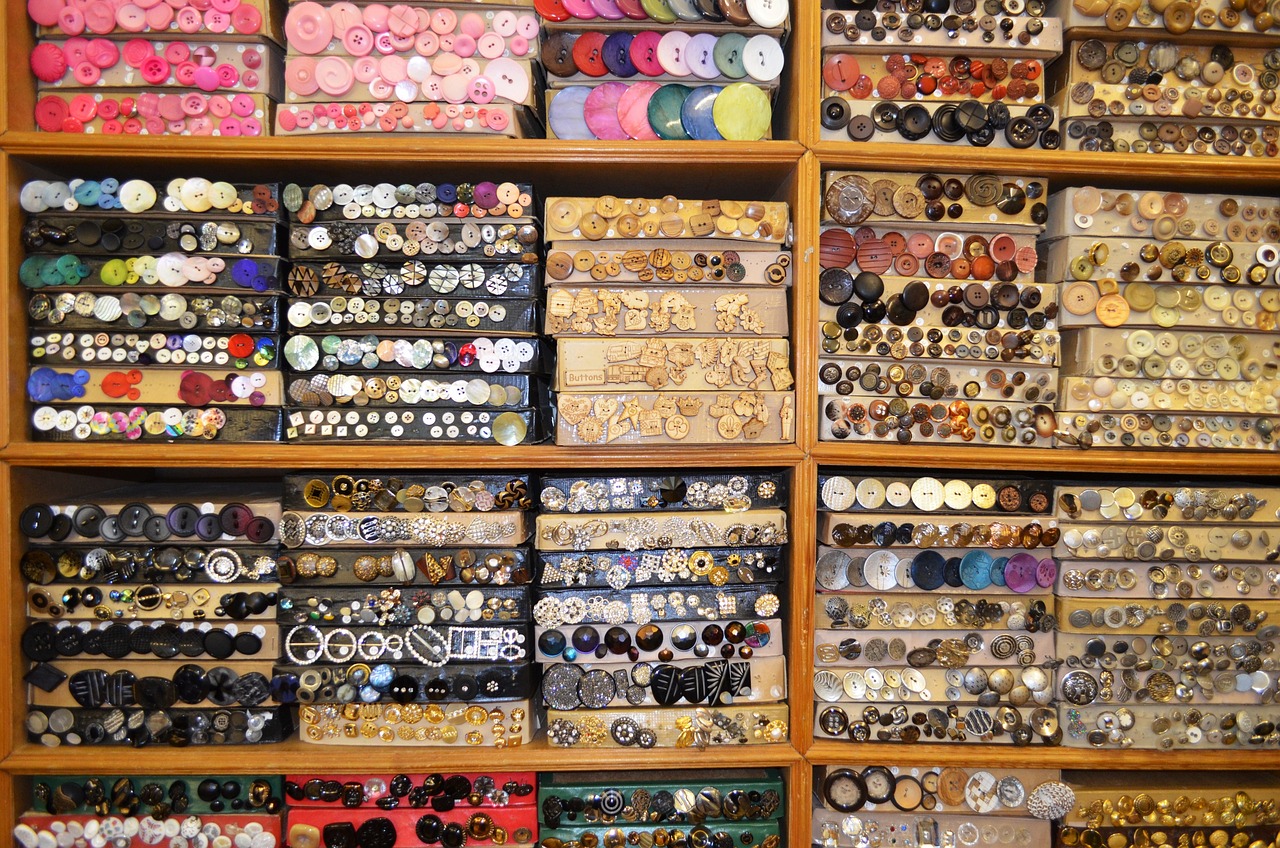
Creating Your First Project
Embarking on your first sewing project can feel like standing at the edge of a diving board, peering down into the unknown. It’s exciting, yet a little intimidating! But don’t worry, we’re here to guide you through this thrilling experience. The key to a successful first project lies in choosing something simple yet rewarding. This way, you can practice your newfound skills while creating something you can actually use or wear. So, let’s roll up our sleeves and dive in!
To kick things off, you’ll want to select a project that aligns with your current skill level. For beginners, it’s often best to start with straightforward items like a pillowcase, tote bag, or simple skirt. These projects are not only easy to follow, but they also allow you to practice essential techniques without overwhelming yourself. As you gain confidence, you can gradually tackle more complex designs!
Here’s a quick overview of some beginner-friendly projects you might consider:
- Pillowcase: A great way to practice straight stitching and finishing seams.
- Tote Bag: Perfect for practicing cutting and assembling fabric pieces.
- Simple Skirt: A fun way to explore elastic waistbands and hems.
Once you’ve chosen your project, the next step is to gather all the necessary materials. This includes fabric, thread, scissors, pins, and your trusty sewing machine. It’s crucial to have everything at hand before you start sewing to ensure a smooth process. Think of it like preparing for a road trip; you wouldn’t want to hit the road without a full tank of gas!
Now, let’s talk about the actual sewing process. Start by reading through your pattern instructions carefully. Patterns can sometimes feel like a foreign language, but with a little patience, you’ll get the hang of it. Make sure to take your time cutting the fabric accurately, as this can make a world of difference in how your final project turns out. Remember, measure twice, cut once!
As you begin to sew, don’t rush. Enjoy the rhythm of the machine and the satisfaction of watching your fabric transform into something tangible. If you encounter any hiccups along the way—like a misaligned seam or a thread jam—take a deep breath! It’s all part of the learning process. Troubleshooting these small issues will only make you a better sewist in the long run.
Finally, once you’ve completed your project, take a moment to admire your handiwork. There’s nothing quite like the feeling of finishing your first sewing project! You’ve not only created something beautiful but also gained invaluable experience that will serve you well in future endeavors. And who knows? You might just find yourself hooked on sewing!
| Question | Answer |
|---|---|
| What’s the best fabric for beginners? | Cotton is an excellent choice for beginners due to its ease of use and versatility. |
| How do I choose the right needle for my project? | Generally, a universal needle (size 80/12) works well for most fabrics. |
| Can I use my sewing machine for quilting? | Yes! Many sewing machines have features that accommodate quilting, but check your manual for specifics. |
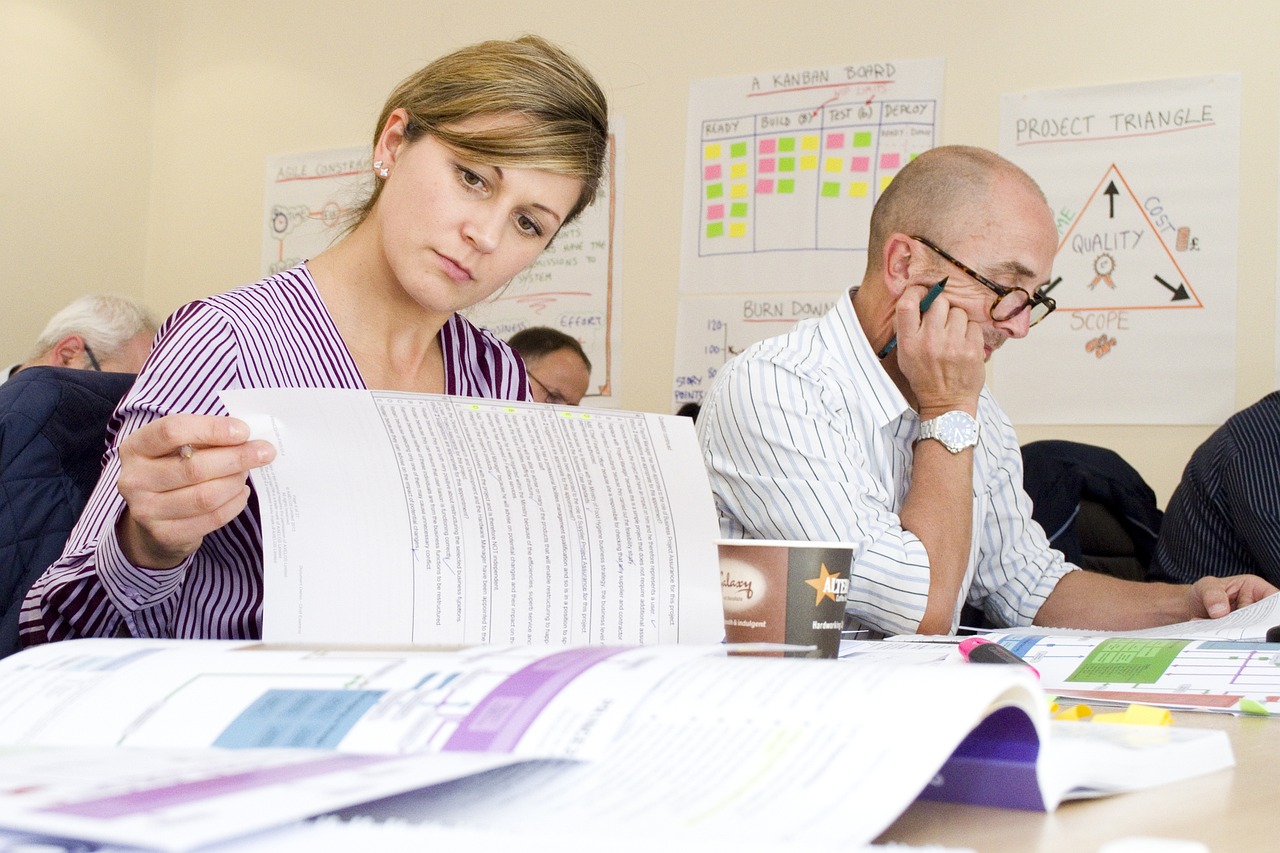
Simple Projects for Beginners
Starting your sewing journey can feel like stepping into a vast ocean of creativity, and the best way to dive in is with simple projects that build your confidence and skills. Think of these projects as your training wheels, allowing you to explore the basics without overwhelming you. One excellent way to start is by creating items that are both fun and functional, giving you a sense of accomplishment as you see your creations come to life.
For beginners, I recommend starting with items that require minimal fabric and basic stitching. Here are a few ideas to get you rolling:
- Drawstring Bag: This project is perfect for practicing straight stitches. You can use any fabric you have lying around, and it’s incredibly useful for storing small items.
- Simple Pillowcase: Making a pillowcase is a great way to learn how to sew straight seams and work with fabric. Plus, you can customize it to match your decor!
- Fabric Coasters: These are quick and easy to make, allowing you to practice cutting and sewing while creating something practical for your home.
As you tackle these projects, remember that the journey is just as important as the destination. Take your time, enjoy the process, and don’t hesitate to make mistakes. Each error is a stepping stone toward mastering your craft. For instance, when making a drawstring bag, focus on perfecting your seam allowance and getting the drawstring to slide smoothly. These little details will enhance your skills significantly.
Moreover, you can always find inspiration and tutorials online. Websites like Pinterest and YouTube are treasure troves of beginner-friendly sewing projects. They offer visual aids that can help demystify the process, making it easier to follow along. Just imagine how satisfying it will be to complete your first project and show it off to your friends and family!
In addition to these projects, consider joining a local sewing group or an online community. Sharing your progress and challenges with others can provide motivation and advice that will enrich your sewing experience. You might even find a sewing buddy who can help you troubleshoot issues or brainstorm new project ideas.
Finally, keep in mind that sewing is not just about the end product; it’s about the joy you find in creating. So grab your fabric, thread your machine, and let your imagination run wild. Each stitch brings you closer to becoming a skilled sewist, and the world of sewing is full of endless possibilities waiting for you to explore!
Q: What is the best fabric for beginners?
A: Cotton is an excellent choice for beginners because it’s easy to work with, widely available, and forgiving for mistakes.
Q: How do I choose the right thread?
A: Always match the thread type to your fabric. For cotton fabrics, use cotton thread, while polyester thread works well for a variety of materials.
Q: Can I sew without a sewing machine?
A: Absolutely! Hand sewing is a valuable skill and can be used for small repairs or projects. Start with simple stitches like the running stitch or backstitch.
Q: How do I fix mistakes in my sewing?
A: Don’t panic! Most mistakes can be fixed. If you’ve sewn something incorrectly, you can often unpick the stitches using a seam ripper and redo it. Practice makes perfect!
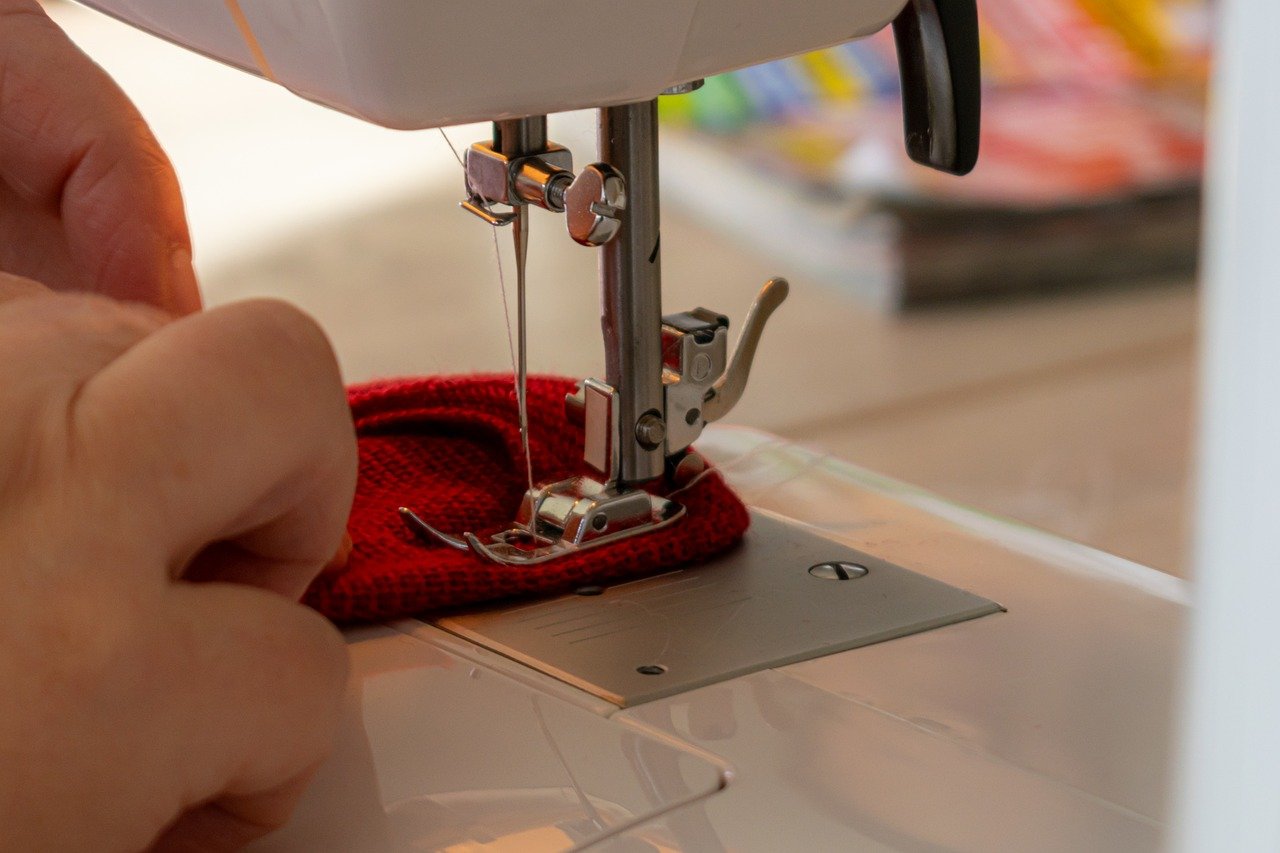
Tips for Success
Embarking on your first sewing project is like setting sail on a new adventure—exciting yet filled with uncertainties. To help you navigate these waters, here are some essential tips that can make your sewing journey smoother and more enjoyable. First and foremost, preparation is key. Before you even thread your needle, take a moment to organize your workspace. A clutter-free area not only enhances your focus but also reduces the chances of misplacing tools or fabric. Think of your workspace as your personal sewing sanctuary; the more inviting and organized it is, the more inspired you'll feel to create.
Next, let’s talk about choosing the right fabric. Selecting the appropriate fabric for your project can make a world of difference. As a beginner, it’s wise to start with materials that are forgiving and easy to work with, such as cotton or linen. These fabrics are less likely to fray and are easier to sew straight seams on. As you gain confidence, you can explore more challenging fabrics like silk or denim. Remember, the fabric choice is like the canvas for a painter; it sets the tone for your entire project.
Another crucial aspect is following the instructions carefully. Sewing patterns often come with a set of guidelines that can seem overwhelming at first. However, take your time to read through them thoroughly before diving in. Think of it like following a recipe; if you skip steps, the end result might not turn out as expected. If you're unsure about a particular step, don’t hesitate to look up tutorials or videos online—there’s a wealth of resources available at your fingertips!
Additionally, practice makes perfect. Don’t be discouraged if your first project doesn’t turn out perfectly. Every seasoned sewist has had their fair share of mishaps. Treat each mistake as a learning opportunity. You might want to create a practice piece using scrap fabric to master new techniques before applying them to your main project. This way, you can build your skills without the pressure of perfection hanging over your head.
Finally, remember to take breaks. Sewing can be incredibly rewarding, but it can also be taxing on your mind and body. If you find yourself feeling frustrated or fatigued, step away for a moment. A short break can rejuvenate your creativity and help you return with fresh eyes and renewed energy. Just like a marathon runner needs to pace themselves, so do you in your sewing endeavors.
By following these tips, you’ll not only enhance your sewing skills but also cultivate a deeper appreciation for the craft. Remember, every stitch you make is a step towards mastery, so enjoy the process and let your creativity flow!
As you embark on your sewing journey, you might have a few questions. Here are some common inquiries that many beginners ask:
- What is the best sewing machine for beginners? Look for a machine that is user-friendly, has a variety of stitches, and fits your budget. Brands like Brother and Singer often have great options.
- How do I choose the right fabric? Start with cotton or linen for beginners. As you gain experience, you can experiment with different fabrics.
- What tools do I need to start sewing? Essential tools include a sewing machine, scissors, pins, a measuring tape, and fabric markers.
- Can I sew without a pattern? Yes! Once you feel more confident, you can create your own designs and sew without a pattern.
Frequently Asked Questions
-
What are the basic tools I need to start sewing?
To kick off your sewing journey, you'll need a few essential tools. A good sewing machine is a must, along with fabric scissors, pins, a measuring tape, and a seam ripper. Don't forget about thread and needles suited for your fabric type! These tools will lay the foundation for your sewing projects and help you avoid frustration.
-
How do I choose the right sewing machine?
Choosing the right sewing machine can feel like finding a needle in a haystack! Start by considering your skill level and what you plan to sew. Are you a beginner? Look for a basic mechanical machine. If you're more advanced, you might want to explore computerized machines with fancy features. Always check for user-friendly interfaces and read reviews to find a machine that fits your needs.
-
Can I sew without a pattern?
Absolutely! Sewing without a pattern is like painting on a blank canvas. You can create your own designs or modify existing ones. Just keep in mind that having a basic understanding of measurements and garment construction will help you achieve better results. Start with simple shapes and gradually work your way up to more complex designs!
-
What are some beginner-friendly sewing projects?
If you're just starting out, consider tackling projects like pillowcases, tote bags, or simple skirts. These projects are not only fun but also give you a chance to practice your skills without overwhelming you. Plus, you'll have something functional to show off at the end!
-
How can I troubleshoot common sewing problems?
We've all been there—thread tangles, skipped stitches, or fabric bunching up. The first step in troubleshooting is to check your machine's manual. Ensure you're using the right needle and thread for your fabric. If stitches are skipping, try adjusting the tension or re-threading the machine. Patience is key, and with practice, you'll become a sewing problem-solving pro!
-
What types of fabric are best for beginners?
When starting out, it's best to stick with fabrics that are easy to handle. Cotton is a fantastic choice—it's forgiving, easy to sew, and comes in a variety of fun prints. Avoid slippery fabrics like satin or stretchy materials like jersey until you're more confident in your skills. As you gain experience, you can start experimenting with different types!
-
How do I care for my sewing machine?
Caring for your sewing machine is crucial for its longevity. Regularly clean it by removing dust and lint, especially around the bobbin area. Oil your machine as per the manufacturer's instructions and always use the right needle and thread. A well-maintained sewing machine will keep you sewing smoothly for years to come!



















